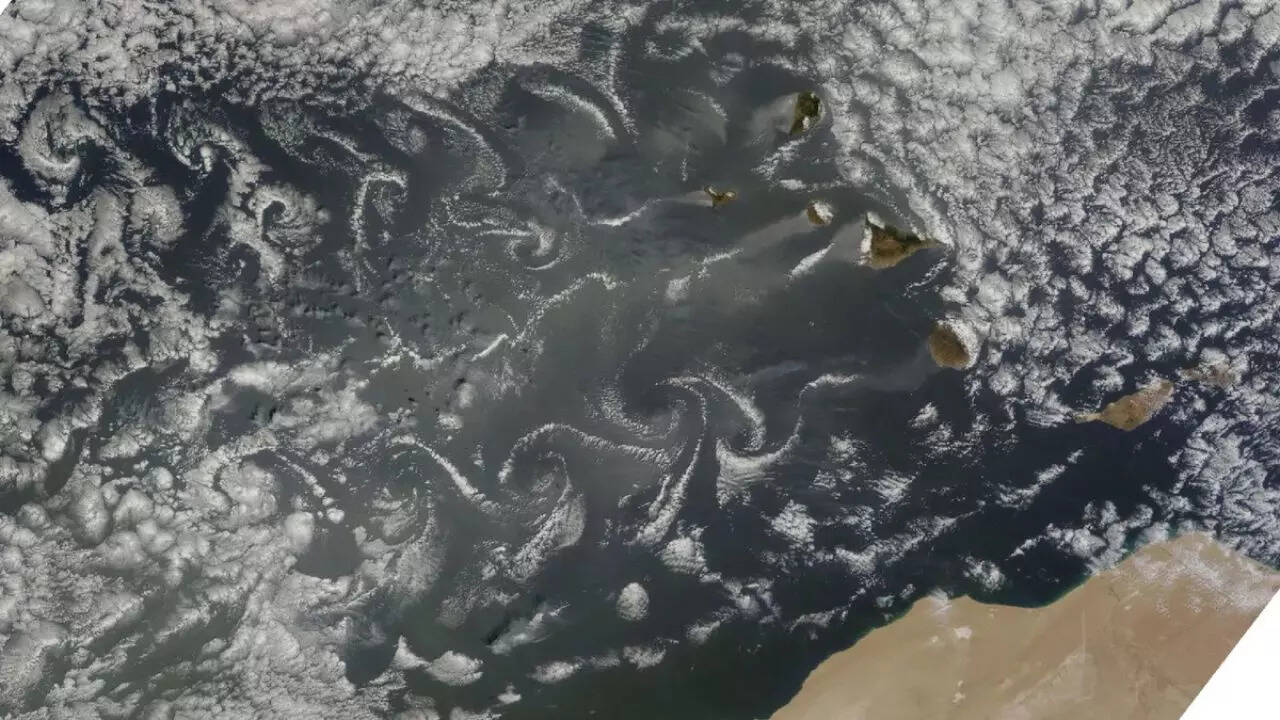NASA satellites have captured a rare and eerie sight: 10 swirling “dark voids” puncturing thick cloud cover above Heard Island, an isolated volcanic landmass in the southern Indian Ocean, around 900 miles (1,500 km) north of Antarctica. The black patches, each averaging 8 miles (13 km) wide, formed in May 2016 and appear as part of an unusual atmospheric pattern. While these formations are linked to von Karman vortices, swirling air currents formed when wind passes around a tall obstacle, scientists note their unusual darkness, tight spiral structure, and dramatic change in direction make this event exceptional.
The 10 dark voids show isolation’s impact on rare weather
The 10 massive dark voids, captured in May 2016, are a striking example of how Heard Island’s extreme environment fuels rare atmospheric phenomena. This uninhabited Australian territory lies in one of the most remote and storm-battered regions on Earth, within the “Furious Fifties,” where powerful westerly winds dominate. Towering above the island is Mawson Peak, a 9,000-foot (2,700-meter) active volcano that disrupts airflow and cloud formations. The combination of volcanic terrain, fierce winds, and the island’s isolation provides perfect conditions for unusual cloud patterns, but seeing them so distinctly in satellite imagery is extraordinarily rare.
Von Karman vortices: Nature’s swirling wind patterns
Von Karman vortices form when fast-moving winds encounter an obstacle, such as an island or mountain, disrupting airflow and creating alternating spinning eddies on either side. These patterns are named after physicist Theodore von Karman, who first described the phenomenon. While von Karman vortices are occasionally observed in other regions of the world, such as the Canary Islands or Guadalupe Island, they usually appear as long, wispy trails of clouds. The vortices over Heard Island were instead marked by dense, perfectly circular gaps in the clouds, making this event stand out from typical occurrences.

Unusual shape and sharp bend make it unique
Most von Karman vortex streams appear smooth and aligned, flowing in a consistent direction. In contrast, the May 2016 formation over Heard Island bent sharply by nearly 90 degrees midstream, an abrupt shift likely triggered by intense westerly winds exceeding 50 mph (80 km/h). Additionally, the presence of thick clouds meant that only the vortex cores were visible, creating the illusion of black voids in the sky. This combination of strong winds, sudden directional change, and isolated visibility of the vortex centers is rarely seen in satellite imagery.
A rare chance to study small-island wind effects
Because Mawson Peak is smaller than most peaks that generate von Karman vortices, such patterns in this location are uncommon. This event offered researchers a rare opportunity to analyze how atmospheric flows interact with smaller volcanic landmasses. Studying these effects can improve understanding of how wind patterns influence global weather systems, climate, and even the transport of airborne particles across oceans. The Heard Island vortices also highlight how relatively minor topographic features can cause significant disturbances in large-scale airflow under the right conditions.